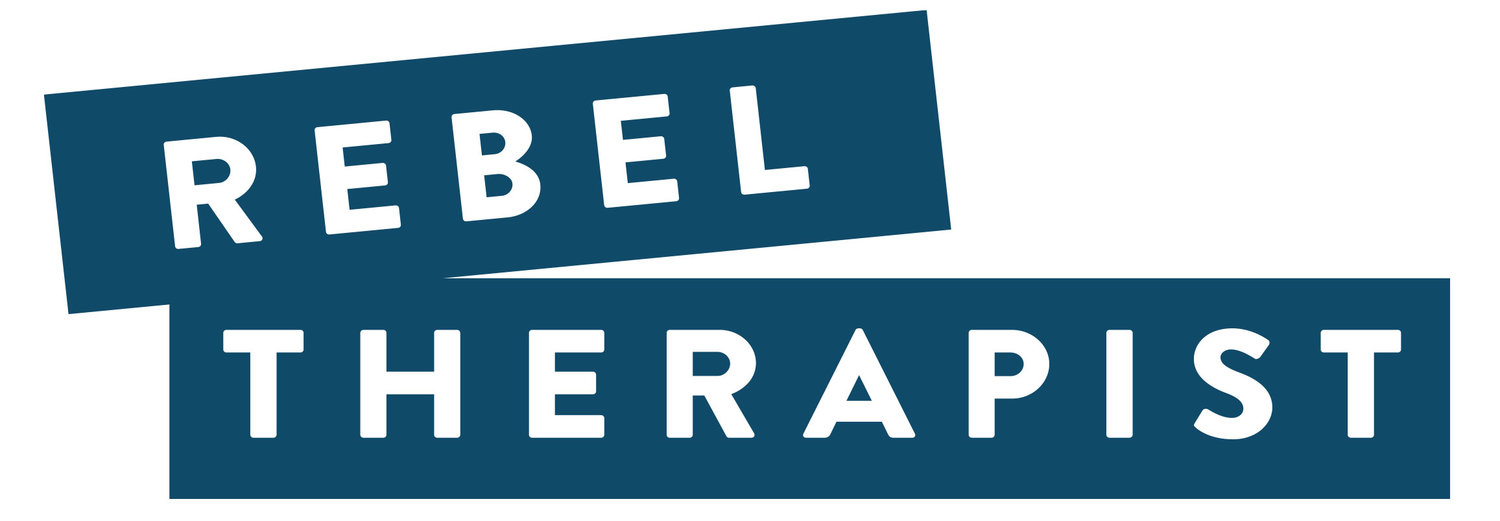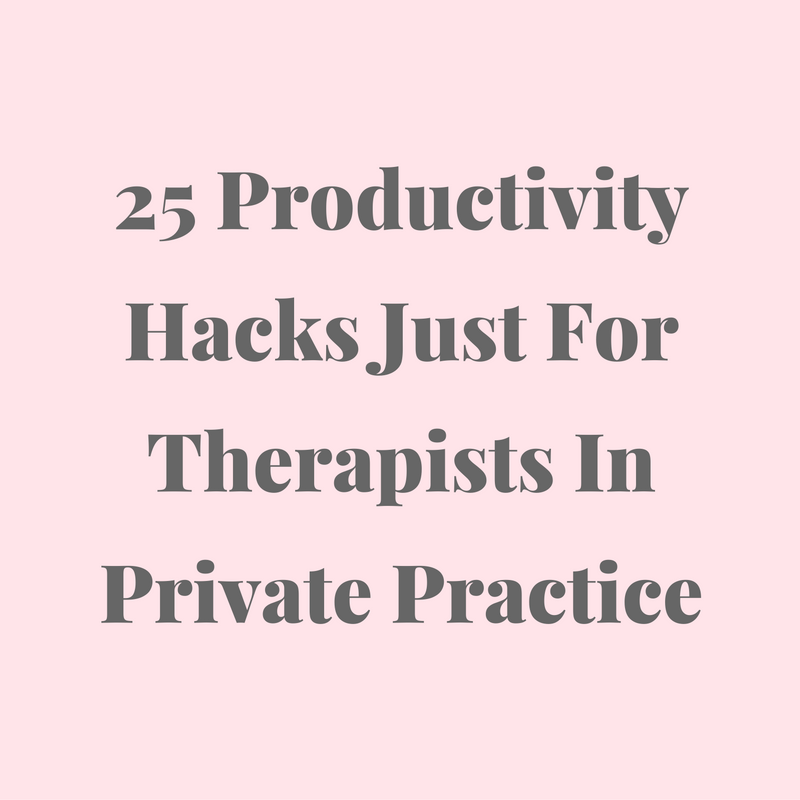As you get ready to set your business goals for 2017, ask yourself these three questions:
What worked this year?
What have you started doing that will likely show results in 2017?
What have you been doing that needs a small tweak in order to show results?
If you’re just starting out, read this post with 2018 in mind.
The Pereto principle states that 80% of your success will come from 20% of your efforts. Let’s apply this principle to your therapy business. Identify the marketing activities that contribute the most to bringing in clients, do more of those things, and you’ll fill your practice.
Are you drawn to trying new things? I get it. Me too. As you set goals for 2017, it’s tempting to add new marketing activities. That MIGHT be a good idea. After carefully considering these 3 questions, you’ll be in a good position to choose the right new activity. It might be the year for you to start a blog, add a workshop to your offerings, or launch a podcast. Just wait until you’ve figured out what’s already working. This process is like going through the clothes in your closet before you head to the store.
You may think doing a little bit of every marketing activity will be the best way to build your practice. That's exactly wrong.
Doing a very small number of activities well and consistently is more likely to bring you the practice you want.
Wondering how it can hurt to do everything? You’ve got limited time. If you spend 2 hours a week on marketing you’ve only got 100 hours to dedicate all year. Spending those hours wisely is one key to your success.
When you spend time on one marketing activity, you’re taking time away from another one. That’s opportunity cost. Doubling or tripling the time and energy you spend on the most effective activities will bring you more clients. You can’t increase the most effective activities unless you cut back on the activities that have been taking up the other 80% of your marketing time. Something’s gotta go.
If you were a larger business, opportunity cost would be less of a big deal. For example, you could afford to send a team off to work on social media and then measure the results of that experiment. You’re one person. When you experiment with social media, you spend less time writing articles, talking to your colleagues, or finding public speaking gigs. You must make room for change and innovation, but you also must be careful with how much of your time you spend in different areas.
WHAT WORKED THIS YEAR?
How did your clients find you in 2016? It might be difficult to identify which of your marketing activities led to new clients. Sometimes you don’t know exactly where your clients found you because they don’t remember. That’s ok. Do your best to figure out where your clients came from this year.
Two tools that will help you gather this information are an inquiry tracking system and Google analytics. If you aren’t familiar with Google analytics, um…Google it.
If you’ve been using an inquiry tracking system, you have a wealth of information to examine. If you haven’t, start now! At minimum, track this information for each person who inquires about services: date, name, where they found you, and whether they came in for a session.
To figure out what’s happening with your website, use Google analytics. Install it now if you haven’t already. Google analytics will start gathering information from the moment you install it, but it can’t gather past data. Start looking at how many people visit your site each month, where they come from, and which pages on your site are most popular. Don’t go down a wormhole and spend too much time on Google analytics. As all online tools, it can be a helpful assistant or a time suck.
If you have no tracking system and you don’t have analytics installed, do your best to remember where your last 10 clients came from.
Now get ready to do more of what worked. Here are two examples.
If you discover that many of your clients found you through an online directory, put MORE energy into your profile on that directory. Get a better photo, update your specialties, and edit your statement so that it speaks directly to your right-fit client in the very moment that they need you. Then consider joining a second directory.
If you notice that one or two colleagues sent you many of your clients, nurture those relationships. Invite those colleagues to attend a training with you, or set up a lunch date. Then think about what makes these referral partners such a good fit and look for a few more colleagues just like them. Nurture those relationships too.
WHAT HAVE YOU STARTED DOING THAT WILL LIKELY SHOW RESULTS IN 2017?
Maybe you’ve planted seeds with some of your marketing activities and they haven’t had a chance to grow yet. Don’t abandon your activities before they have a chance to work.
For example, if you’ve started relationships with colleagues who have told you “I’ve sent you a few referrals,” but those people never seem to call, don’t give up. It sometimes takes months for the necessary chain of events to happen: Your colleague gets to know you and understands what you do well, they talk to a person who is looking for a therapist just like you, they give that person your name, the potential client looks you up, and then the potential client takes the first step of contacting you. If you’re planting networking seeds with several colleagues, those seeds will bloom. You just can’t control when.
In my experience and the experiences of the many therapists I’ve worked with, these are the activities most likely to start working after a number of months of persistent activity:
Networking 1:1 with colleagues
Giving talks to groups that include your right-fit clients
Having good, niched profiles in directories with high traffic
Creating great copy on the most popular pages on your website
Creating great content such as articles for your website
WHAT HAVE YOU BEEN DOING THAT NEEDS A SMALL TWEAK IN ORDER TO SHOW RESULTS?
Maybe you’re doing some of the right things, but you need to make small changes to HOW you’re doing those things.
Let’s look at a few examples.
You study Google analytics and discover that your website isn’t turning visitors into clients often enough. You’ve got hundreds of visitors to your site each month, but you only get one or two phone calls. Just about every visitor looks at your homepage, so work to make the copy better. Every word should speak directly to your right-fit client. Need some help with this process? Here you go.
You’ve gone to an organization’s networking event every month all year, and not a single client has been referred from those colleagues. If no one you’ve met there appeals to you, jump ship now and don’t look back. If, on the other hand, you feel like you’ve made some good connections with colleagues who you like and respect, make a tweak to your process. Go to the event every other month, and invite one or two of those colleagues to coffee one on one in between. Go here for more help with networking.
You’ve done 3 public speaking gigs this year, and only one client has resulted. Ask yourself a few questions to identify what small changes you need to make. Did you give your audience members an easy path to sign up for a free consultation right after the talks? Did you keep the topic of your talks narrow enough that you could cover that topic well? Did you give opportunities for the participants to interact with you and the other participants? For more tips on public speaking, go here.
Before you go on to the next stage of goal setting, take a deep breath and congratulate yourself on what worked this year.
Ready to create the practice you want and deserve? My next Superpower Method For Therapists® Program begins in February. Find out more.












